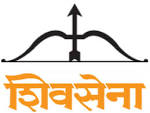It was a cool rainy day on June 19, 1966, that a frail, young political cartoonist with fiery eyes assembled a loose ‘Army of Shivaji’ and launched the Shiv Sena for espousing the case and cause of ‘sons of the soil’.
After many ups and down, mostly the latter, the saffron, ultra-right party is now celebrating the golden jubilee of its founding.
A mega-bash is planned on Sunday to mark the milestone, but doubts linger among its loyal soldiers, outside supporters, its allies and opponents and some others who barely tolerate it. Battle-weary with several causes it championed, depending on the political weather — pro-Marathi chauvinism vis-a-vis anti-South Indian, anti-North Indian, anti-Gujarati, its all-time favourites — anti-Pakistan and anti-Muslim and self-proclaimed guardian of Hindutva versus ‘green terror’ and the like, the party finally tasted the fruits of power in 1995.
En route, it was blamed for various ills like communal riots in different parts of the state and Mumbai, blatantly taking sides in the communal divide in the city’s mafia with ‘Hindu don’ versus ‘Muslim don’ and different types of serious allegations against the party and members of the Thackeray clan. Before long, Big Brother in the form of then Union Home Minister Indrajit Gupta came to Mumbai in July 1996 wielding a small stick which sent shivers down the spine of Thackeray and his entire army.
The party was, once and for all, sobered off its penchant for ‘thok-shahi’ (mobocracy) instead of ‘lok-shahi’ (democracy). It was voted to office first in 1995 in alliance with the Bharatiya Janata Party and in 2014 piggybacking on the BJP, besides a nominal share in power at the centre under both NDA regimes headed by then Prime Minister A. B. Vajpayee and now Prime Minister Narendra Modi. Perhaps out of sheer habit, whilst in government, it continues to run riot as ‘the embedded opposition’, occasionally even embarrassing the official Opposition parties. At one point, the Sena enjoyed such a dubious reputation that if Thackeray merely raised his eyebrows, the entire city downed shutters to disappear in a self-imposed curfew mode.
The ‘Tiger’ Thackeray’s personality, his dragon-fire speeches and bold writings through Marmik, Saamana and Dopahar Ka Saamana managed to hold the party together and terrorised all opposition, within and outside. Slowly, leakages started in the family and the party — members like nephew Raj Thackeray walked out and formed a new party, Maharashtra Navnirman Sena, and diehard loyalists like Chhagan Bhujbal, Narayan Rane, Sanjay Nirupam and other less prominent ones quit Shiv Sena to join different parties and flourished.
Among the current crop, many potentially strong leaders like Manohar Joshi are sidelined, or retired, some others have been softened with ministerial posts and many more are simply ignored. The Sena continues to lack a strong party organisation, a support base mostly restricted to some urban centres like Mumbai, Thane, Palghar, Pune, Aurangabad and Nashik. It is still struggling in other parts of the state and obsessed with local level politics to capture civic bodies, especially the prosperous milch cow called Mumbai.
Thus, like the good old days of Bal Thackeray, the jaded ‘army’ is now looking up to current chief Uddhav Thackeray, who in turn appears to a fatigued ‘general’, who keeps glancing at son Aditya, as the party totters on behind them.
Apparent contradictions are galore: Shiv Sena harbours national ambitions, effectively put forth by Bal Thackeray, and has even fought elections independently in several states but is moored in regionalism. It passionately seeks to be the torch-bearer of hardcore ‘Hindutva’ but is constrained by realpolitik and electoral compulsions, though nobody objected when the late Thackeray was proclaimed as ‘Hindu Hriday Samrat’. Its gen-next is largedly confined to siblings or cousins, or children of existing leaders, with limited appeal among the youngsters.
Sorely lacking a dedicated think tank, the party gets its daily dose of ‘englightenment’ thanks to the tankful of wisdom emanating from its mouthpieces delivered by the newspaper vendor. Amidst all this, in its 50th year the Shiv Sena is still fervently hoping to capture the BrihanMumbai Municipal Corporation (BMC) and other important civic bodies independently in 2017, and struggling hard to achieve the late Thackeray’s dream of ‘100 percent Shiv Sena’ in the 2019 Assembly elections. Much noise and verbal fireworks are expected during its Golden Jubilee Year, luckily coming when the party is in power.
But a lot more effort would be needed to clear the clouds hovering on its future or risk a fade-out on the political horizon.






Leave a reply